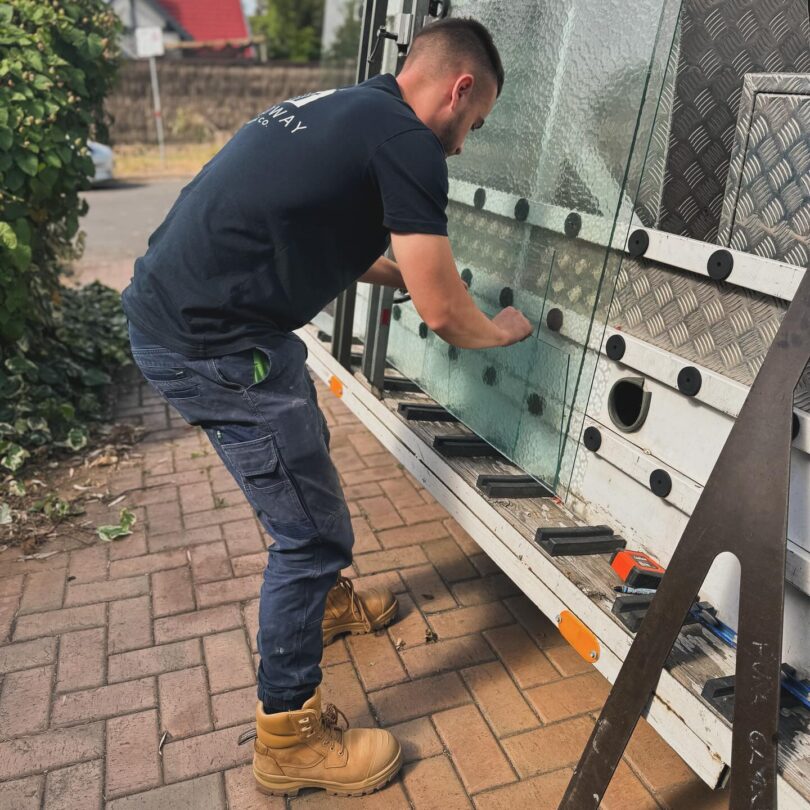Discovering a crack in one of your windows can be a frustrating experience, especially when you’re unsure if your insurance will cover the repair costs. Whether it’s your car, home, or business premises, the type of insurance you hold plays a crucial role in determining if you’re covered. Navigating the complexities of insurance policies can seem daunting, but understanding your coverage is essential.
If you’ve ever wondered whether your insurance policy takes care of window damage, you are not alone. Many find themselves questioning what exactly their policy covers and what remains out of pocket. So, let’s delve into the specifics of insurance coverage for window cracks, helping you understand what to expect and how to proceed if you find yourself facing this common issue.
Understanding window damage and insurance coverage
Window damage can manifest in several forms, each varying in severity and cause. Common types include:
- Cracks: These can range from small chips that hardly affect the window’s integrity to large cracks that compromise the entire pane.
- Chips: Often caused by flying debris, chips are small and usually circular in size. They might seem minor but can sometimes expand into larger cracks.
- Breaks: Typically resulting from significant impact, breaks can leave your window shattered or with large, dangerous openings.
- Understanding the specific type of damage can help you determine the likelihood of insurance coverage.
Factors that influence your insurance coverage
Several factors affect whether your insurance will cover window damage, including:
- Policy type: Comprehensive policies generally cover all types of window damage, whereas third-party policies do not.
- Cause of damage: If the damage is a result of vandalism or an accident, it’s generally covered. Natural disasters and environmental factors might be covered, depending on your specific policy.
- Deductible amount: If the repair cost is lower than your deductible, you’ll need to pay out of pocket.
- Previous claims: If you’ve made many claims in the past, your insurer might limit coverage or increase your premiums.
Each of these factors plays a crucial role in a claim and understanding them will better prepare you for handling window damage claims.
Types of insurance policies and coverage limits
Comprehensive car insurance
Comprehensive car insurance usually includes coverage for a wide range of damage to your vehicle, not limited to accidents involving other vehicles. Cracks in your car windows can fall under this category, provided they are the result of incidents covered by your policy such as vandalism, theft, or environmental factors like storms or falling objects. Coverage conditions might differ based on your chosen insurer and the specifics of your policy. For example, if a crack in your window emerges not from a specific incident but from general wear and tear, your comprehensive insurance might not cover the repair costs.
Home insurance specifics
When it comes to home insurance, coverage for window damage depends on the outlined perils in your policy. Mostly, policies cater to scenarios like natural disasters, theft, or vandalism. If a crack in your home window results from one of these listed perils, you are likely to receive coverage.
However, it’s crucial to understand that general deterioration over time typically isn’t covered. Each policy comes with limits of liability which define the maximum amount an insurer will pay for a covered loss.
Ensure you review these limits to fully understand the extent of your coverage, as repair or replacement costs can vary notably depending on the size and type of the damaged window. For all replacement specific needs, it’s best to speak with an expert glazier. If you are based in South Australia, Pure Glass SA can help you.
Six steps for claiming insurance for a window crack
- Review your policy: Before initiating a claim, it’s imperative you review your insurance policy. This enables you to confirm whether the specific type of window crack is covered and ensures you understand your deductible, which is the amount you’ll pay out-of-pocket before insurance kicks in.
- Document the damage: Take clear photos of the crack from multiple angles. If the incident resulted from a specific cause like a storm or vandalism, include photos of the overall scene and any additional evidence that supports your claim.
- Contact your insurance provider: Reach out to your insurance provider to notify them about the damage. You’ll likely fill out a claim form detailing the date, time, and circumstances of the incident. Accurate and detailed descriptions aid in the smooth processing of your claim.
- Schedule an inspection: Many insurance companies require an inspection by a claims adjuster. They’ll evaluate the damage and provide an estimate for repair or replacement, which will help determine your coverage.
- Review the adjuster’s report: Once the inspection is complete, review the adjuster’s report. It details the extent of coverage for the repair services needed. If certain expenses are not covered, the report will delineate the reasons.
- Arrange for repairs: After approval, you can proceed with arranging for repairs. Your insurance provider may recommend or require you to use a certified repair service to ensure quality work. Here are five critical steps for a smooth repair process.
Understand the reason for denial
Insurers are required to provide a clear reason for denying a claim. Review this reason carefully – common issues could be due to your policy not covering certain types of damage or discrepancies in the claim details. Be ready by:
Insurers are required to provide a clear reason for denying a claim. Review this reason carefully – common issues could be due to your policy not covering certain types of damage or discrepancies in the claim details. Be ready by:
Gathering additional documentation
If you believe the denial of your claim was unjust, gather any additional documentation that supports your case, such as more detailed photographs, repair estimates, or eyewitness testimonies.
File an appeal
Contact your insurance provider with the additional documentation to file an appeal. Clearly explain why you believe the claim should be covered and provide all supporting materials.
Seek an external review
If your appeal is not successful, you can seek an external review by contacting your local regulatory body for insurance. They can offer assistance and may investigate the claim further.
Consult a legal professional
As a last resort, if other avenues have failed and you still believe your claim was unfairly denied, consulting a legal professional may provide you with additional options for recourse.
Navigating the insurance claim process requires attention to detail and persistence, but understanding these steps helps ensure you’re prepared to tackle any challenges that arise if your window suffers a crack and needs repair.
Preventing and addressing window cracks
Preventative measures
Taking proactive steps ensures your windows remain intact, reducing the likelihood of needing insurance intervention. Firstly, regular inspections identify minor issues before they escalate. Make it a routine to check your windows for any signs of stress or weakness.
Secondly, installing high-quality windows equipped with weather-resistant features guards against environmental stresses like high winds or extreme temperatures. Moreover, applying window films not only enhances strength but also prevents shattering. These films hold the glass together even when cracked, buying you valuable time to arrange for repairs.
Maintaining a safe distance from activities that could propel debris towards your windows, such as mowing the lawn or children playing, further minimises risk. If you’re in an area prone to severe weather, investing in shutters or impact-resistant windows is advisable, as these can significantly diminish the potential for window damage.
Repair versus replacement options
When a crack does occur, determining whether to repair or replace the window is crucial. Minor cracks often require only a simple repair, which can be cost-effective and quick. Many insurance policies cover repairs fully, especially if the crack does not compromise the integrity of the entire window. For small cracks less than six inches that do not intersect more than one edge of the glass, repair is usually adequate.
Conversely, larger or multiple cracks often necessitate a complete window replacement. Replacing the window might be necessary if the damage impairs the window’s structural integrity or poses a safety hazard.
Insurance policies typically cover replacement under comprehensive plans, but reviewing your policy details is essential, as deductibles and coverage limits can affect your out-of-pocket costs. Opting for replacement not only ensures safety but also enhances your property’s aesthetic and insulation properties, potentially saving on future energy costs.
The last word
Navigating the maze of insurance coverage for window cracks requires a clear understanding of your policy’s specifics. You’ll benefit greatly from staying proactive by regularly inspecting windows and implementing preventive measures that can save you from future headaches.
Always weigh the repair versus replacement options carefully based on the extent of the damage and your insurance provisions. By staying informed and prepared you can manage potential costs effectively while ensuring your property remains secure and visually appealing. Remember proactive steps today can prevent larger expenses tomorrow.
Frequently Asked Questions
What types of window damage are typically covered by insurance?
Most insurance policies cover window damage resulting from unexpected incidents like storms, vandalism, and accidents. However, coverage can vary, so it’s essential to check the specifics of your policy.
How can I prevent window cracks?
Regular inspections, installing high-quality windows, and applying protective measures such as window films can significantly reduce the risk of window cracks. Also, maintaining a safe distance from potential hazards is crucial.
Should I repair or replace a cracked window?
The decision to repair or replace a cracked window depends on the size and location of the crack. Small and non-obstructive cracks can often be repaired. However, larger or strategically located cracks usually require replacement for safety and aesthetics.
How does the insurance deductible affect a window damage claim?
The deductible is the amount you pay out of pocket before your insurance covers the remainder of a claim. Higher deductibles can lower your premium but increase out-of-pocket costs for repairs or replacements.
What proactive steps can I take to enhance my eligibility for insurance claims on window damage?
Ensure your windows are well-maintained and reinforce them if you live in high-risk areas. Keep a record of inspections and upgrades, as they can provide evidence of diligence and decrease the likelihood of claim disputes.
“The opinions expressed by BizWitty Contributors are their own, not those of BizCover and should not be relied upon in place of appropriate professional advice. Please read our full disclaimer."







